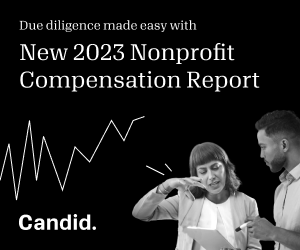Seven principles to realize the potential of diaspora philanthropy for India

In the five years since its establishment, the India Philanthropy Alliance (IPA) has created a network of some of the leading India-focused charities active in the United States and completed the first collective national fundraising campaign, known as India Giving Day. We have also identified seven priorities which—if widely adopted by India-focused donors—could make a tremendous impact in addressing the issues of poverty, food insecurity, public health, and other daunting challenges the country still faces. They are:
1. Focus on institutions, not projects. Many inexperienced philanthropists focus on giving to specific projects of nonprofits that lend themselves to reporting easily understandable and quantifiable outcomes. In contrast, a growing number of more thoughtful Indian American givers see the advantages of using their donations to strengthen institutions that can tackle today’s problems while also nurturing talent, ideas, and techniques that will allow them to combat next-generation problems and impact opportunities that don’t even exist yet. A project usually lasts a few years at most; an effective mission-driven organization can have a lasting impact over decades while learning at each stage of its development how to work more effectively and efficiently.
2. Fund where the need is greatest. Indian American donors often initially restrict their donations to supporting work going on in easy-to-reach urban or suburban centers, typically places close to where they may have business to conduct or relatives to visit, or in their ancestral villages. However, growing numbers have realized that directing their philanthropy to the areas of greatest need—in terms of the incidences of poverty, illiteracy, malnutrition, and ecological fragility—often lead to the biggest impact. As corporate donations through India’s world-class law requiring 2 percent of profits to be directed to corporate social responsibility (CSR) projects tend to focus on areas where their customers and investors live and work, better targeting of private philanthropy becomes even more essential.
3. Support collective impact efforts. In their desperate scramble for resources to implement programs and support needed institutional infrastructure, many nonprofits miss opportunities to collaborate with—or even coordinate or communicate with—other mission-driven organizations. Launching IPA was an effort to reverse this trend. When such collaborative networks emerge organically, philanthropists would be wise to support them quickly and generously. Early support of progressive nonprofit coalitions and networks can help change that in India and beyond; among other benefits, it would encourage more integrated service delivery at the field level (as it has already done within IPA).
4. Engage policy makers. A 2007 Stanford Social Innovation Review article by Heather McLeod Grant and Leslie R. Crutchfield posits that the nonprofits and philanthropists that have the most impact engage in and support both direct service delivery and outreach to policy makers. It is best when those policy reform efforts are informed by on the ground programs and the insights they reveal. Impact on social and environmental problems can often be magnified when combined with needed policy reforms, and donors should consider supporting such advocacy with donated funds and by volunteering to use their influence with policy makers to get needed reforms enacted. It is important to not limit such engagement to the federal level, as state and local public officials often have underappreciated influence, and are often remarkably open to outside input from people of goodwill who have done their homework and can help them govern more effectively. This is especially true in many parts of India.
5. Support nonprofits that partner strategically with state and local governments. In India, as in the U.S., government officials at the local and state levels often eschew ideology for pragmatism. After all, whether or not they deliver services to their citizens is often plain for all to see. While many Indian American donors who have recollections of the so-called “License Raj” era are wary of government, increasingly they see high-impact opportunities inherent in nonprofits co-creating social innovations with local government agencies. In such scenarios, successful models can be scaled by public-sector partners far beyond what any individual nonprofit—or even networks of nonprofits—could do. For IPA, this insight led to a year-long exploration of best practices for charities partnering with government.
6. Include youth and young professionals. Nonprofits may face demographic cliffs if they and their donors do not nurture interest in India and its philanthropic possibilities with second- and third-generation Indian Americans. The ageism that characterizes so much of the nonprofit world won’t cut it anymore. Decisive action for the full inclusion of youth is urgently required. For example, organizing and funding summer visits to India for young people that includes spending a week or two with an Indian nonprofit can go a long way. Models such as the internship program of the Sehgal Foundation and the Banyan Fellowship of the American India Foundation, and IPA’s national youth essay competition, now in its fourth year, are positive examples of nonprofits working to creatively engage youth in philanthropy and social change.
7. Focus on the metrics that matter most. When comparing charities, most donors wisely seek to go beyond anecdotal evidence of effectiveness and overall brand awareness to focus on objective quantitative measurements. But reducing their evaluation efforts to a single numeric measure such as “overhead rate” has significant limitations. While not entirely meaningless, such a crude measure often distorts as much as it clarifies. Indeed, much has been written about how the overemphasis on keeping overhead rates low has led to a “nonprofit starvation cycle” where mission-driven organizations underinvest in their execution, oversight, and compliance capabilities in ways that undermine their long-term effectiveness in order to “appear” efficient to donors and the public. Rather than encourage a self-defeating “race to the bottom,” donors can instead emphasize measurements of the positive impact a nonprofit is making and its efficiency in doing so. In other words, they can deemphasize measuring inputs (funds raised and volunteers mobilized) and outputs (program services delivered) and focus instead on outcomes (beneficiaries’ lives improved). Just as we don’t choose airlines to fly based on which ones spend the least on maintenance, donors shouldn’t choose charities based on the degree to which they deprive themselves of needed capacity investments.
We believe that if these principles were adopted by Indian Americans with resources to deploy in philanthropic pursuits, it could transform both India and America in the years ahead.
Alex Counts is executive director of the India Philanthropy Alliance; the author of four books, including Changing the World Without Losing Your Mind: Leadership Lessons from Three Decades of Social Entrepreneurship; an independent consultant to mission-driven organizations; and an adjunct professor at the Johns Hopkins University’s School of Advanced International Studies. Previously, he established Grameen Foundation in 1997 with the support of Nobel Peace Prize laureate Professor Muhammad Yunus and served as its CEO for 18 years.








How educating women can create a ripple effect of greater good